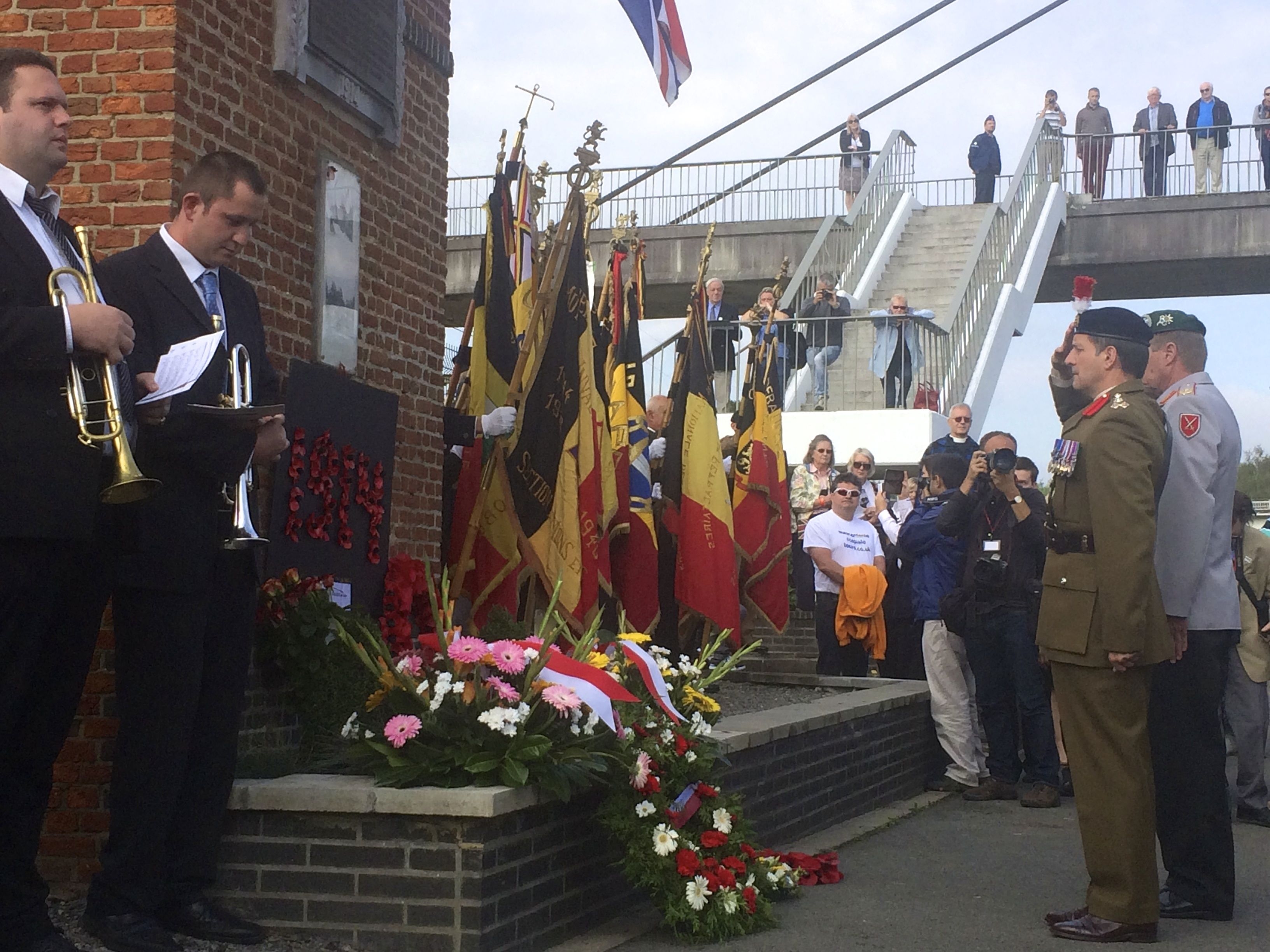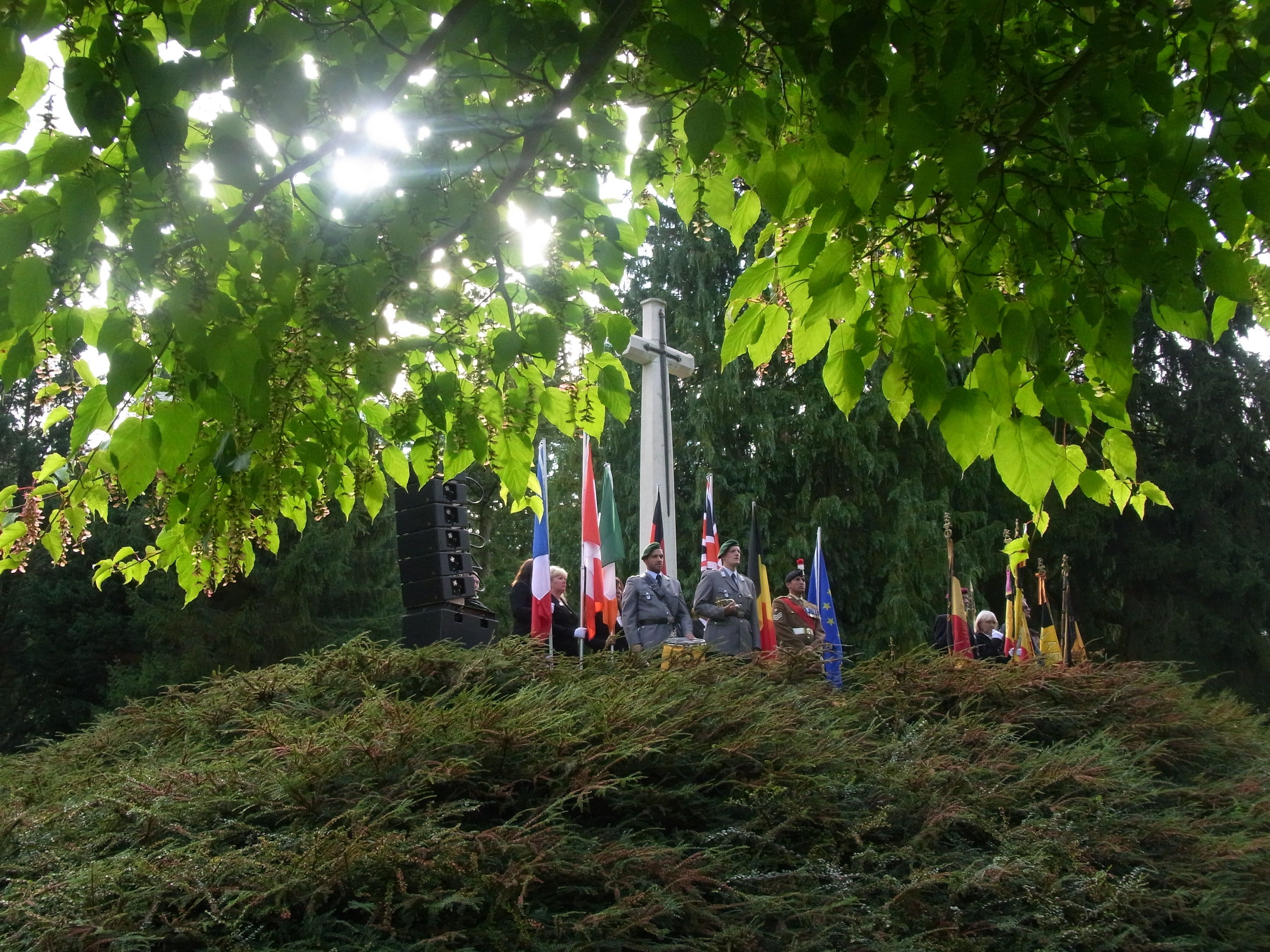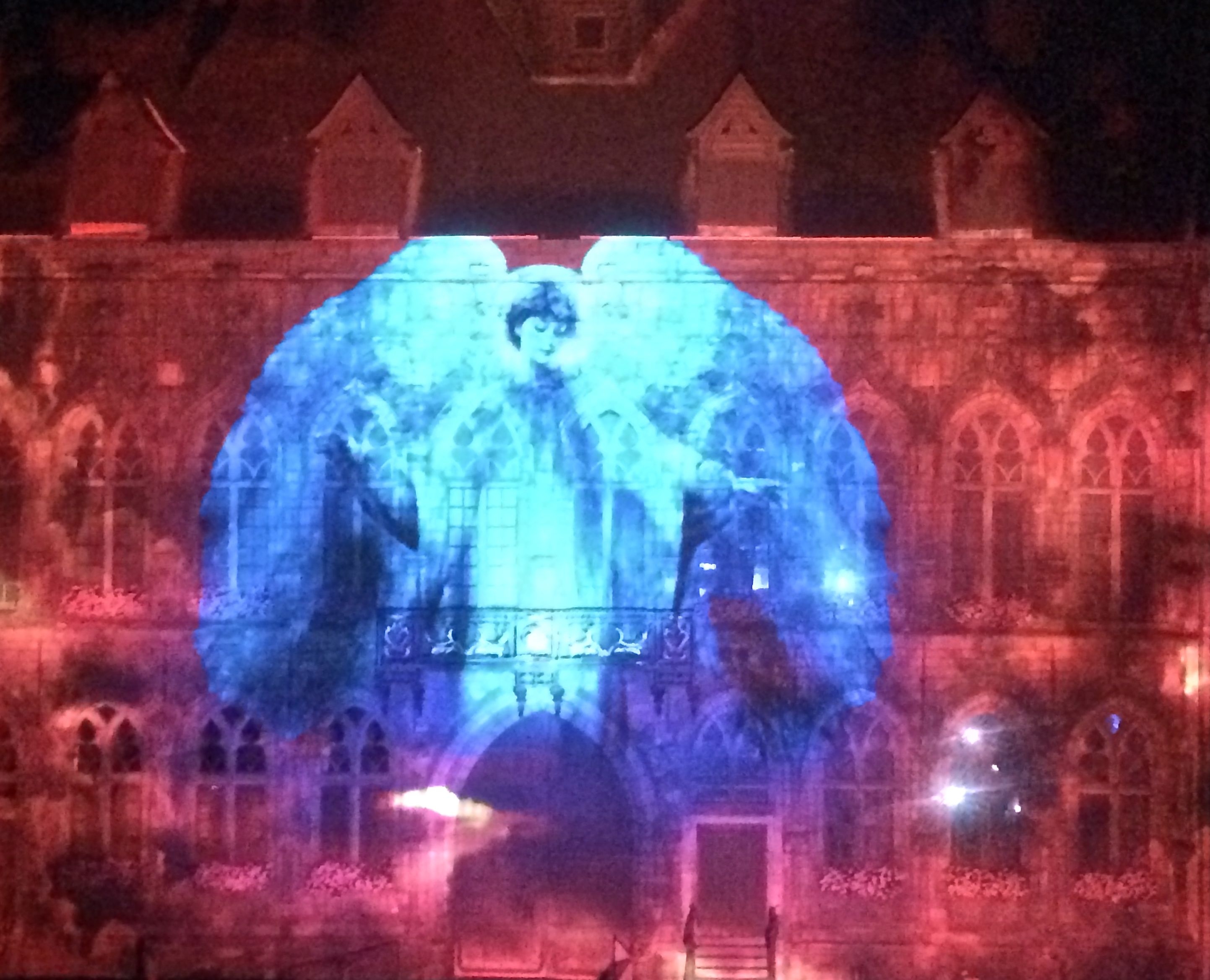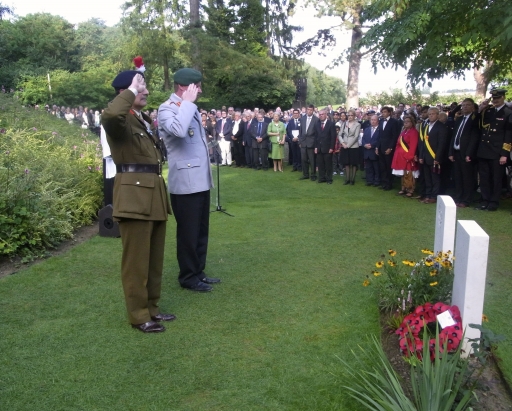The Belgian town of Mons has led a day of solemn tributes to all those who fell in the opening battle between the British and German Armies 100 years ago.
Ambassadors and senior military officers representing the former belligerents stood together at a series of commemorations marking key episodes in the Battle of Mons.
There were tributes and wreaths too from descendants of the soldiers from the British Expeditionary Force who made a stand here on August 23rd 1914 as German troops advanced through neutral Belgium to attack France.
Frank Agger read a letter from his second cousin, Corporal Frank Agger, who was killed in the action at Mons.
At the outbreak of the war, the 22-year-old soldier wrote these words to his sister as the 4th Middlesex prepared to move to the Front: “I am quite happy and in the best of health, and feel as if I can with truth say, that I am as fit to fight for my country as any man could and should be.
“Trusting you will keep a stout heart and look on the bright side of things, and the honour and glory of saying my brother is doing what every able-bodied Englishman should do.”
 Obourg station: Remembrance at the memorial to the 4th Middlesex
Obourg station: Remembrance at the memorial to the 4th Middlesex
At Nimy railway bridge, Colin Godley shared memories of his grandfather, Private Sidney Godley, winner with Lieutenant Maurice Dease of the first Victoria Crosses of the Great War.
Mr Godley told Centenary News that his grandfather didn’t talk about the defence of the Mons-Condé canal which left him seriously injured and cost Lieutenant Dease his life: “He was a very quiet and unassuming man.
“He would say he was just one person. Thousands died and he did what he had to do at the time, and I suppose he thought that was what he was there for.”
On an otherwise sunny day, the people of Mons braved sudden downpours to watch the planting of a Centenary Oak in the Place du Parc, remembering all the soldiers and civilians killed a century ago.
Belgium was represented by Prime Minister Elio di Rupo, who’s also Mayor of Mons, at ceremonies in the town, and at the closing remembrance service in St Symphorien Military Cemetery.

This tranquil woodland, the last resting place of almost equal numbers of British and German soldiers, reprised its role of August 4th 2014 as the focus for shared remembrance.
The large crowds gathered among the Commonwealth and German headstones were urged to remember the ‘common humanity’ of all those laid to rest here.
Thanks was given for a Europe now at peace. But amid the conflicts in Ukraine and the Middle East, there was also a warning that peace is fragile, and work remains to be done.
For Mons, the centenary commemorations of August 4th and 23rd 2014 are a starting point for international attention.
A memorial museum, dedicated to the First World War, opens in 2015 when the town celebrates its year as European Capital of Culture.
Plans are already being laid for the centenary of the Armistice in 1918, and the liberation of Mons by Canadian troops just as the war was ending.
Mons has been pleasantly surprised by the strength of overseas interest, reflected in the large numbers of British visitors who flocked to the town for the 100th anniversary of the opening battle.

The gothic facade of Mons Town Hall, backdrop for a spectacular son-et-lumière telling the story of the ‘Angels of Mons’
Professor Laurence Van Ypersele, First World War specialist at the Catholic University of Louvain, says curiosity among Belgians has also surged in the past two years: “Even historians specialising in memory studies like me didn’t expect it so much. We expected a little wave but it’s like a tsunami.”
“The First World War is a very big event which explains many things of today. I think we have to take this time as an opportunity to think about what happened.”
Details of forthcoming First World War Centenary events in Belgium can be found on the websites of the Belgian Tourist Office – Brussels & Wallonia; and Visit Flanders.
Text of Corporal Frank Agger’s letter, courtesy of the Agger family
Images: Peter Alhadeff, Centenary News
Posted by: Peter Alhadeff, reporting for Centenary News from Mons
